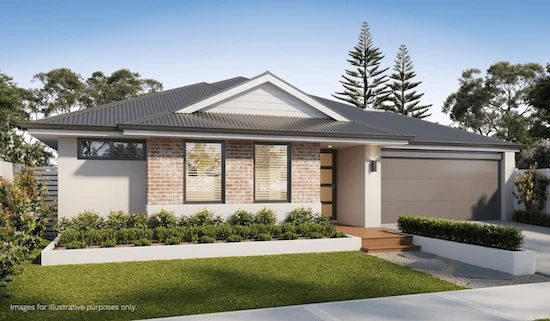Drying Out the House
In the beginning, your house is wet. This may sound weird, but the materials used to build it
contained loads of water, and this results in a lot of residual moisture. Over the first six
months, your house will dry out, which makes the timber and plaster shrink. Naturally, this
means cracks can appear – but don’t panic, they’re normal, and not structurally significant.
Make it Green
As any plant parent knows, the gardens surrounding your house are a huge part of your
lifestyle – where else are you going to chill out on summer days? So, make sure you get to
know your plot of land just as well as your house.
Here’s the first thing you need to know: when you build on reactive soils, your house is more
likely to get damaged by soil movement. Reactive soils expand and contract, and can cause
cracking in your house. If you find out your home is on reactive soils, just limit the amount of
water you use around the house to keep the moisture down. Check out the Guide to
Homeowners on Foundation Maintenance and Footing Performance at the CSIRO bookshop for
more info.
Drainage
When you start setting up your yard, you’ll need to grade the ground around the house with
a slope of 50mm over the first metre. Make sure surface drains take water away from the
house, and never let water lie under the subfloor area.
Also, no matter how pretty it’ll look, don’t put any landscaping over weep holes or subfloor
vents in brick walls. If you’re wondering what weep holes are then you’re not alone – they’re
gaps left in brickwork to let moisture escape.
Gardens
Let your landscaper know (just kidding, we mean your online landscaping tool) that you can’t
have any large garden beds right near the house. You’ll have to set aside that area for paths
or small bushes.
Watering
Be water-wise! Only water your gardens and lawns as much as they need. Even though you
think you’re giving the plants lots of love, overwatering may lead to water buildup, and it
doesn’t do any favours for the planet. During the hot, dry summer, you’ll have to watch out
for underwatering as well though, as your home’s foundation can be damaged when the soil
dries up and shrinks.
Trees and Shrubs
Like any homeowner, you’ll pick spots for your trees based on the aesthetic, and where you’ll
be putting that BBQ and outdoor table… But there’s more to it than that. If the trees are too
close to the house, then the roots can create cracks in the foundation. A rule you can follow
is that trees should be planted at a distance from the house that’s equal to their average
mature height. Also, avoid planting anything near sewer lines – no need to give details, you
can guess why!







